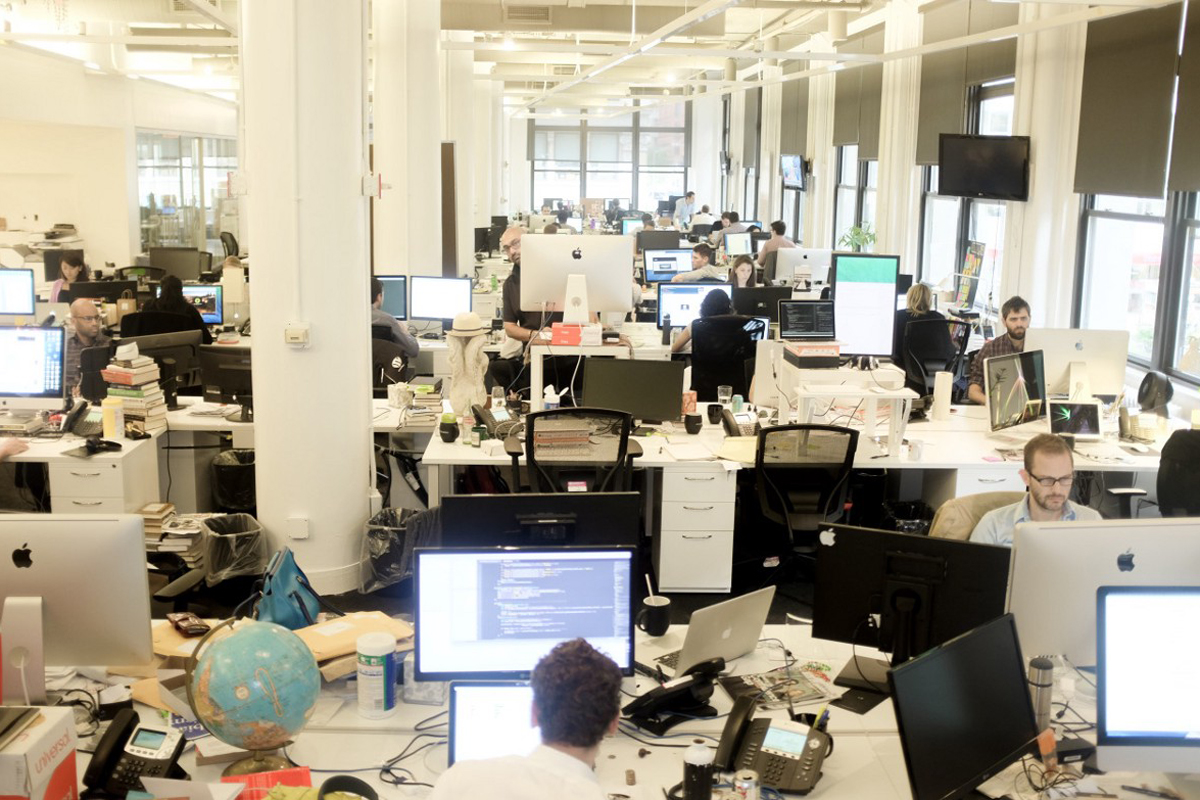Quartz has a reputation for doing things differently. The business news startup was mobile-first from launch. The staff has pushed boundaries with native advertising and by publishing internal conversations. Earlier this month, they released an app that mimics texting to deliver news.
So it’s no surprise Quartz would treat something as mundane as an office move as an experiment in self-reflection.
Executive Editor Zach Seward recently announced that the startup had outgrown its current office and would use Medium to document its move to a new space. “Moving offices can be a pain, but it’s also an opportunity to take stock of how the company has grown what it could still become,” he wrote.
The diary explores Quartz’s culture and examines how to reflect and encourage those values in a physical location. Initial posts include a history of the building and a glimpse of the architects’ vision for the new space.
As someone intrigued by office culture and creating happier newsrooms, I reached out to Seward for more information about the move. His responses have been edited for length and clarity.
You’re just at the beginning stages, but it’s already interesting to follow your office move. What inspired you to document the process? What do you hope to learn from blogging along the way?
As we started thinking about all the issues related to our office move — sense of culture, communal spaces, standing desks, videoconferencing setups, etc. — we realized they were very common questions encountered by all growing startups. We also write about all of that stuff on qz.com already. So we thought it would be fun to write about it from the perspective of our own office and air those issues in public because we know people are interested. Ideally, we’ll also learn from others who have gone through it before and have advice.
The physical workspace can have a strong bearing on office culture. How would you describe the culture at Quartz, and how do you hope your new office will help maintain that?
Our architects, Kathy Chia and Arjun Desai, did a great job capturing that after interviewing a lot of the Quartz staff and reviewing survey responses from everyone. We published their distillation of what “Quartziness” means. Some of the key attributes are globalness, nerdiness and playfulness. Now the challenge is translating those qualities into a physical space.
This ties in with a series you’re doing on the future of work. What inspired this beat? Do you think there’s an audience out there for this topic?
We call the areas and topics that we love to cover on Quartz “obsessions.” We’ve been obsessed with this fundamental shift happening in the workplace, where people move from traditional chain-of-command structures to more flexible networked systems. We’ve renamed our “Future of Work” obsession to “The Office” because it also encompasses the physical space. We explore the companies and personalities that are both influencing startup culture and changing the way larger, more established businesses are operating. We cover companies that employ alternative management structures and dive more deeply into ways that make working in an office smarter and more efficient. We hope our readers are as interested in this topic as we are!
How involved is the Quartz staff in this process? Do people seem excited about the move?
Yes, everyone is excited, if only because we’ve been out of space in our current office for a while now, so some people currently have less-than-ideal desks. Moving offices can also serve as an important milestone, especially for us now after such a period of growth. So, we do want to make a big deal about it and have the whole staff involved as much as possible, including our many employees outside New York.
What advice would you give other organizations looking to update their offices? Do you have any low-budget ideas on how to improve a workspace to better facilitate collaboration and productivity?
That’s exactly what we’re hoping to find out in this Medium diary. We’ve already heard plenty of interesting solutions to common workplace gripes and hope to see many more.
If you have a story idea about workplace culture, share it in the comments below or tweet @katiehawk. For more tips and resources on improving workplaces, follow #40BetterHours.







